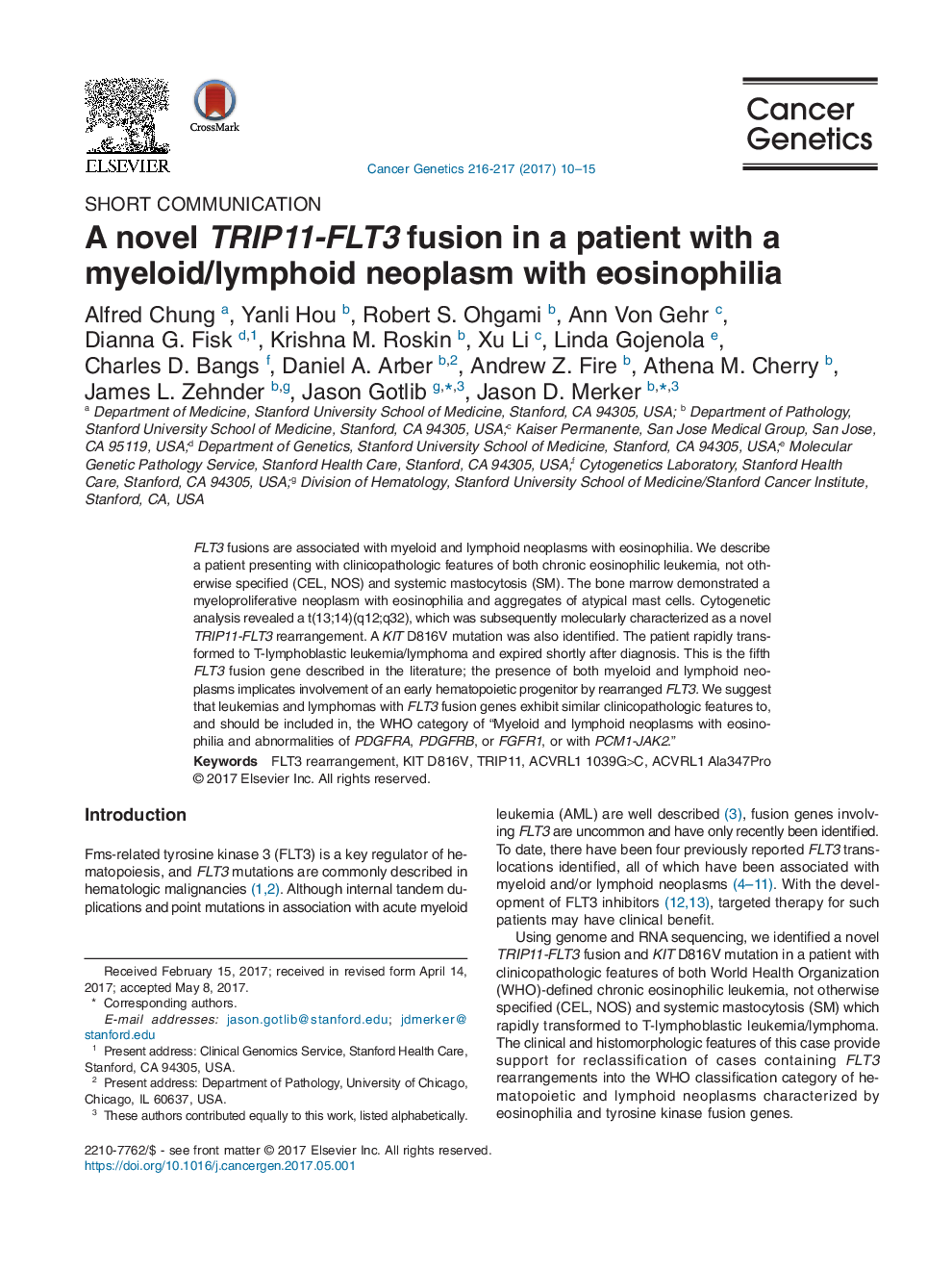| Article ID | Journal | Published Year | Pages | File Type |
|---|---|---|---|---|
| 5525022 | Cancer Genetics | 2017 | 6 Pages |
â¢Identification and molecular characterization of a novel TRIP11-FLT3 fusion.â¢Case report of a patient with CEL, NOS and systemic mastocytosis.â¢Neoplasms with FLT3 rearrangements may warrant inclusion in a different WHO category.
FLT3 fusions are associated with myeloid and lymphoid neoplasms with eosinophilia. We describe a patient presenting with clinicopathologic features of both chronic eosinophilic leukemia, not otherwise specified (CEL, NOS) and systemic mastocytosis (SM). The bone marrow demonstrated a myeloproliferative neoplasm with eosinophilia and aggregates of atypical mast cells. Cytogenetic analysis revealed a t(13;14)(q12;q32), which was subsequently molecularly characterized as a novel TRIP11-FLT3 rearrangement. A KIT D816V mutation was also identified. The patient rapidly transformed to T-lymphoblastic leukemia/lymphoma and expired shortly after diagnosis. This is the fifth FLT3 fusion gene described in the literature; the presence of both myeloid and lymphoid neoplasms implicates involvement of an early hematopoietic progenitor by rearranged FLT3. We suggest that leukemias and lymphomas with FLT3 fusion genes exhibit similar clinicopathologic features to, and should be included in, the WHO category of “Myeloid and lymphoid neoplasms with eosinophilia and abnormalities of PDGFRA, PDGFRB, or FGFR1, or with PCM1-JAK2.”
